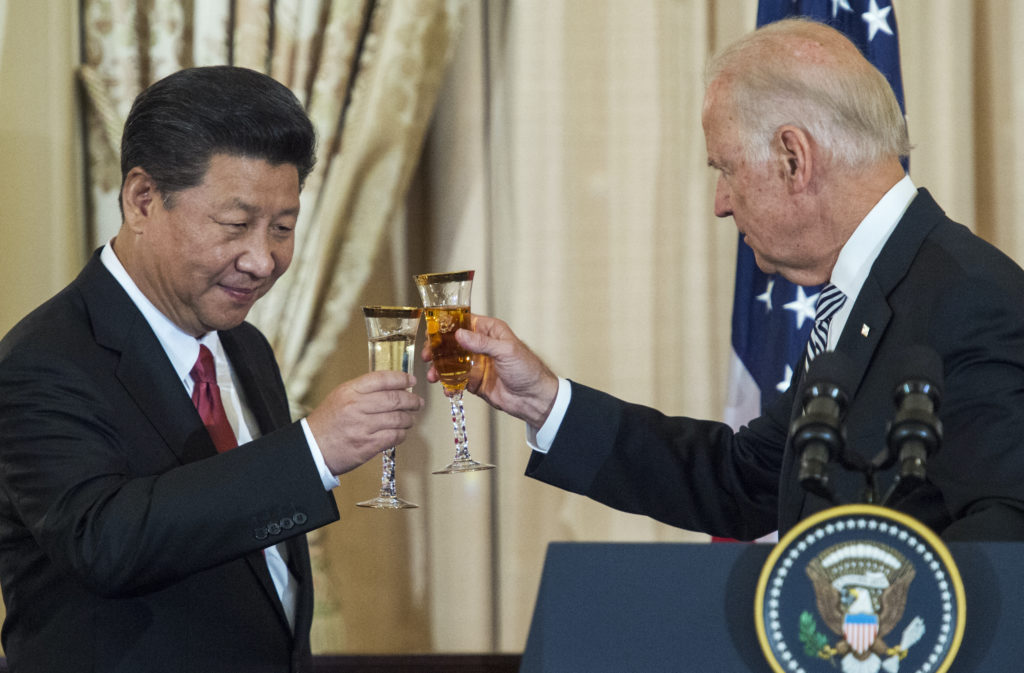
When U.S. President Barack Obama was first sworn in, expectations that a departure from the Bush Administration’s obsession with the Middle East were imminent. The argument was that the United States had paid too much attention to its military interventions in Afghanistan and Iraq, and too little was spent on Asia, where an emerging China was now developing islands by hand and attempting to influence weaker Southeast Asian states to do its bidding.
However Obama’s pivot in Southeast Asia was inconsistent with espoused American values. U.S. relations with Vietnam significantly improved, particularly in removing the ban on arms sales, but also evidenced by an improved trade relationship and a mutual resolve to check China’s aggression in the South China Sea. The rest of Southeast Asia was not so easy. Thailand’s May 2014 coup d’etat significantly deteriorated bilateral relations with the United States, as joint military exercises were cancelled, military aid was suspended, all of which made the job of popular American Ambassador to Thailand Kristie Kenney more difficult. In Cambodia, a firmer line on human rights and democracy pushed Phnom Penh deeper into the welcoming arms of Beijing. In the years that followed, Cambodia completed its steep democratic decline, later dissolving the only major opposition political party and cracking down on media freedom and public dissent.

Interrupted by four years of Donald Trump, the Biden pivot back to Asia should expand Obama-era efforts to contain China, without the alienation of East Asian allies like Japan and South Korea. American interests in Asia should include both a prioritization of a free and open Indo-Pacific strategy, but also one that does not force Southeast Asian countries into positions of accommodation or balancing with China. There were concerns that the reemergence of the Quad, a political and security alliance between the United States, India, Australia and Japan, would threaten the centrality of ASEAN. An effective American strategy should be inclusive of ASEAN, even as it struggles to maintain relevance during the Myanmar crisis.
A proper pivot needs to present Southeast Asian countries an alternative to China on the most pressing issues facing the region. The elephant in the room is the Mekong River. The Biden Administration must press for alternatives, as nearly a dozen Chinese dams upstream are harming ecosystems and creating water supply problems to downstream countries such as Myanmar, Thailand, Cambodia, and Vietnam. While economic benefits from hydropower development are expected to increase to as much as $160 billion by 2040, the generation of power presents clear dangers to forests, mangroves, and fisheries that are dependent on the steady flow of water from the Mekong.
Biden must present viable political options for Southeast Asian countries, who lack the political capital to wrest control away from China. Beijing’s investments in the Mekong have nearly frozen the U.S. out of a role in the issue, although some options still remain. The Mekong River is a singular issue that unites more than 60 million people that depend on it for their lives and livelihoods. The United States should invest heavily in its own Lower Mekong Initiative, which was heavily neglected during the Trump era. However, Vice President Kamala Harris’ recent swing though the region gives the indication that it will. It should also rally support for dialogue and increased data sharing within the Mekong River Commission.
However, as Obama learned more than four years ago, leading with American values or with human rights, as Harris expressed in Singapore in late August. While expressing concerns about persecution and repression by the military junta in Myanmar and the rights of workers in Vietnam, the flawed human rights records of Southeast Asian states should be painfully apparent to both Biden and Harris, the details of which can easily be found in the U.S. State Department’s Reports on Human Rights Practices. America has to confront the reality that basing a pivot on values will ultimately lead to roadblocks, as values and interests differ across the continent. The failure to both see and understand this reality raises questions whether Biden has properly thought through American policy in the region.
If Biden is to ensure that America is prepared for confrontation with China, it should not look to the North. Southeast Asia will once again be the front line in any conflict with Beijing. Confrontation is the most likely to occur over support for Taiwan, as it boldly claims sovereignty over all of the disputed islands in the South China Sea. It is here that entry points still exist in the form of naval exercises and the region’s flagship Cobra Gold exercises. These exercises are a way of broadening bilateral relationships with countries, while minimizing antagonism. Southeast Asia Cooperation and Training (SEACAT), held in Singapore is another multilateral exercise designed to enhance cooperation in the maritime domain.
Finally, another irony in the American re-pivot back to Asia is that the legacy of the Bush Administration—which both Obama and Biden wanted to avoid, has now undermined American efforts to solidify its presence in the Asia-Pacific. Bush, Trump, and Biden are complicit in the failures of the Afghan conflict, which ended with the Taliban returning to power after 20 years of waiting. That irresponsibility has undermined efforts to convince nervous Southeast Asian countries to rethink their partnerships with China. Beijing has been quick to point out America’s unreliability—will it be there for you in the same way it was there for Afghanistan?
Pivot 2.0 must learn the lessons of the first. American rhetoric about values and human rights as an anchor of policy in Southeast Asia must be weighed against the sobering realities of authoritarian politics. America is now further behind China after four years of inconsistent policy. Biden’s success in Southeast Asia now depends on America playing catchup in terms of serious investment, partnerships, and bilateral cooperation.






